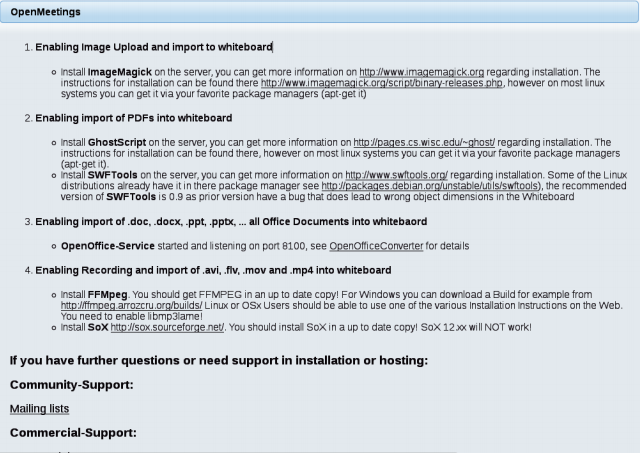
Introduction Docker is an application that makes it simple and easy to run application processes in a container, which are like virtual machines, only more portable, more resource-friendly, and more dependent on the host operating system. For a detailed introduction to the different components of a Docker container, check out. There are two methods for installing Docker on CentOS 7.
One method involves installing it on an existing installation of the operating system. The other involves spinning up a server with a tool called that auto-installs Docker on it. In this tutorial, you'll learn how to install and use it on an existing installation of CentOS 7. Prerequisites • 64-bit CentOS 7 Droplet • Non-root user with sudo privileges. A CentOS 7 server set up using explains how to set this up. Note: Docker requires a 64-bit version of CentOS 7 as well as a kernel version equal to or greater than 3.10. The default 64-bit CentOS 7 Droplet meets these requirements.
Conversando en ingles jaime garza bores pdf reader download. Feb 15, 2013 Installatie Openmeetings Preparation. Install CentOS 6.3 64-bit; I'm installing OM on /data, as this server will be a node in a cluster which will be configured at a later stage. How To Install Node.js on a CentOS 7 server Posted August 18, 2014 638.1k views Node.js CentOS. By: Justin Ellingwood. To install NVM on your CentOS 7 machine, visit the project's GitHub page. Copy the curl or wget command from the README file that displays on the main page. This will point you towards the most recent version of the.
All the commands in this tutorial should be run as a non-root user. If root access is required for the command, it will be preceded by sudo. Explains how to add users and give them sudo access. Step 1 — Installing Docker The Docker installation package available in the official CentOS 7 repository may not be the latest version. To get the latest and greatest version, install Docker from the official Docker repository.
This section shows you how to do just that. But first, let's update the package database: • sudo yum check-update Now run this command. It will add the official Docker repository, download the latest version of Docker, and install it: • curl -fsSL sh After installation has completed, start the Docker daemon: • sudo systemctl start docker Verify that it's running: • sudo systemctl status docker The output should be similar to the following, showing that the service is active and running.
Output● docker.service - Docker Application Container Engine Loaded: loaded (/lib/systemd/system/docker.service; enabled; vendor preset: enabled) Active: active (running) since Sun 2016-05-01 06:53:52 CDT; 1 weeks 3 days ago Docs: Main PID: 749 (docker) Lastly, make sure it starts at every server reboot: • sudo systemctl enable docker Installing Docker now gives you not just the Docker service (daemon) but also the docker command line utility, or the Docker client. We'll explore how to use the docker command later in this tutorial. Step 2 — Executing Docker Command Without Sudo (Optional) By default, running the docker command requires root privileges — that is, you have to prefix the command with sudo. It can also be run by a user in the docker group, which is automatically created during the installation of Docker. If you attempt to run the docker command without prefixing it with sudo or without being in the docker group, you'll get an output like this. Outputdocker: Cannot connect to the Docker daemon. Is the docker daemon running on this host?

See 'docker run --help'. If you want to avoid typing sudo whenever you run the docker command, add your username to the docker group: • sudo usermod -aG docker $(whoami) You will need to log out of the Droplet and back in as the same user to enable this change. If you need to add a user to the docker group that you're not logged in as, declare that username explicitly using: • sudo usermod -aG docker username The rest of this article assumes you are running the docker command as a user in the docker user group. If you choose not to, please prepend the commands with sudo. Step 3 — Using the Docker Command With Docker installed and working, now's the time to become familiar with the command line utility.
Using docker consists of passing it a chain of options and subcommands followed by arguments. The syntax takes this form: • docker [option] [command] [arguments] To view all available subcommands, type: • docker As of Docker 1.11.1, the complete list of available subcommands includes. OutputNAME DESCRIPTION STARS OFFICIAL AUTOMATED centos The official build of CentOS. 2224 [OK] jdeathe/centos-ssh CentOS-6 6.7 x86_64 / CentOS-7 7.2.1511 x8.
Archive
- Family Tree Maker 2006 Torrent
- Borderlands Series Number On A Map
- Harry Potter 7 Part 2 Pc Game Crack Files
- Nissan Gtr Need For Speed Most Wanted Mod
- Diablo 3 Ps3 Save Editor Download
- Torrent Losing My Religion Mp3
- Battagliero Valzer Pdf Files
- Cara Install Adobe Photoshop Cs2 Dengan Keygen Crack Serial Number